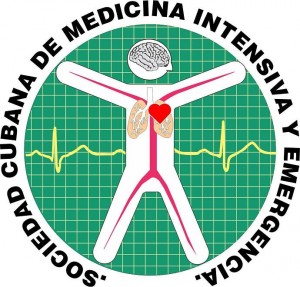Presence of albuminuria in situations of glomerular hyperfiltration in severe trauma
Keywords:
albuminuria, polytraumatized, severe trauma, glomerular hyperfiltrationAbstract
Introduction: The systemic inflammatory response in critical illness is caused by the release of inflammatory mediators. Microalbuminuria is a reflection of renal endothelial damage secondary to the activation of inflammation. In recent years, the importance of glomerular hyperfiltration (GFR) in critically ill patients suffering from severe trauma has been highlighted.
Objective: To determine the association of albuminuria with glomerular hyperfiltration in critically ill patients admitted to an Intensive Care Unit (ICU) after suffering a severe traumatic event.
Methods: Observational study that includes patients admitted to severe trauma Intensive Care. Demographic, analytical and severity variables are collected. The 24-hour urine volume was collected during the first week of admission. As an indicator of the glomerular filtration rate (GFR), creatinine clearance (CrCl) was calculated in a 4-hour urine collection sample. The analyzes were performed with the statistical software R version 4.0.4.
Results: 85 patients with a median age of 51 years were included, 78,82% were male, with median ISS of 25 and SOFA at admission of 4. 71.7% had HFG. The incidence of proteinuria was 37.07%, more present in the first 24 hours of admission (50%). 59.52% of the patients who presented microalbuminuria associated HFG.
Conclusions: We found that glomerular hyperfiltration and albuminuria are frequent conditions in critically ill patients hospitalized for severe trauma and it is not demonstrated that the two phenomena are statistically significant. We consider it useful to study the repercussions that these modifications in renal function may have with the dosage of drugs.
Keywords: .
Downloads
References
1. Aird WC. Endothelium as an organ system. Crit Care Med. mayo de 2004;32(5 Suppl):S271-279.
2. Knight EL, Curhan GC. Albuminuria: moving beyond traditional microalbuminuria cut-points. Curr Opin Nephrol Hypertens. mayo de 2003;12(3):283-4.
3. Stehouwer CDA, Gall MA, Twisk JWR, Knudsen E, Emeis JJ, Parving HH. Increased urinary albumin excretion, endothelial dysfunction, and chronic low-grade inflammation in type 2 diabetes: progressive, interrelated, and independently associated with risk of death. Diabetes. abril de 2002;51(4):1157-65.
4. Gosling P. Microalbuminuria: a marker of systemic disease. Br J Hosp Med. 20 de octubre de 1995;54(6):285-90.
5. Thorevska N, Sabahi R, Upadya A, Manthous C, Amoateng-Adjepong Y. Microalbuminuria in critically ill medical patients: prevalence, predictors, and prognostic significance. Crit Care Med. abril de 2003;31(4):1075-81.
6. Arts DGT, de Keizer NF, Vroom MB, de Jonge E. Reliability and accuracy of Sequential Organ Failure Assessment (SOFA) scoring. Crit Care Med. septiembre de 2005;33(9):1988-93.
7. Baker SP, O’Neill B, Haddon W, Long WB. The injury severity score: a method for describing patients with multiple injuries and evaluating emergency care. J Trauma. marzo de 1974;14(3):187-96.
8. Pérez MG, Olmo RS, Arroyo RA, Fresnedo GF, Gui JMG, Diezhandino MAG, et? al. Documento de la Sociedad Española de Nefrología sobre las guías KDIGO para la evaluación y el tratamiento de la enfermedad renal crónica. Nefrol Publ Of Soc Esp Nefrol. 2014;34(3):302-16.
9. Hobbs ALV, Shea KM, Roberts KM, Daley MJ. Implications of Augmented Renal Clearance on Drug Dosing in Critically Ill Patients: A Focus on Antibiotics. Pharmacotherapy. noviembre de 2015;35(11):1063-75.
10. MacKinnon KL, Molnar Z, Lowe D, Watson ID, Shearer E. Use of microalbuminuria as a predictor of outcome in critically ill patients. Br J Anaesth. febrero de 2000;84(2):239-41. Grootaert V, Willems L, Debaveye Y, Meyfroidt G, Spriet I.
11. De Gaudio AR, Spina R, Di Filippo A, Feri M. Glomerular permeability and trauma: a correlation between microalbuminuria and Injury Severity Score. Crit Care Med. octubre de 1999;27(10):2105-8.
12. Barletta JF, Mangram AJ, Byrne M, Sucher JF, Hollingworth AK, Ali-Osman FR, et? al. Identifying augmented renal clearance in trauma patients: Validation of the Augmented Renal Clearance in Trauma Intensive Care scoring system. J Trauma Acute Care Surg. abril de 2017;82(4):665-71.
13. Bilbao-Meseguer I, Rodríguez-Gascón A, Barrasa H, Isla A, Solinís MÁ. Augmented Renal Clearance in Critically Ill Patients: A Systematic Review. Clin Pharmacokinet. septiembre de 2018;57(9):1107-21.
14. Fuster-Lluch O, Gerónimo-Pardo M, Peyró-García R, Lizán-García M. Glomerular hyperfiltration and albuminuria in critically ill patients. Anaesth Intensive Care. septiembre de 2008;36(5):674-80.
15. Noda Albelo AL, Vidal Tallet A. Farmacocinética y farmacodinámica, implicación en un uso más racional de los antimicrobianos: implication in a more rationale use of antimicrobials. Rev Cuba Farm. diciembre de 2010;44(4):533-46.
16. Pea F, Viale P, Furlanut M. Antimicrobial therapy in critically ill patients: a review of pathophysiological conditions responsible for altered disposition and pharmacokinetic variability. Clin Pharmacokinet. 2005;44(10):1009-34.
17. Ambrose PG, Bhavnani SM, Ellis-Grosse EJ, Drusano GL. Pharmacokinetic-pharmacodynamic considerations in the design of hospital-acquired or ventilator-associated bacterial pneumonia studies: look before you leap! Clin Infect Dis Off Publ Infect Dis Soc Am. 1 de agosto de 2010;51 Suppl 1:S103-110.






